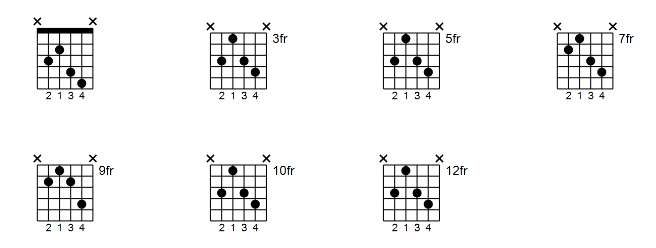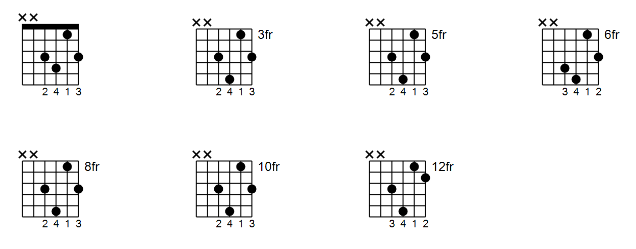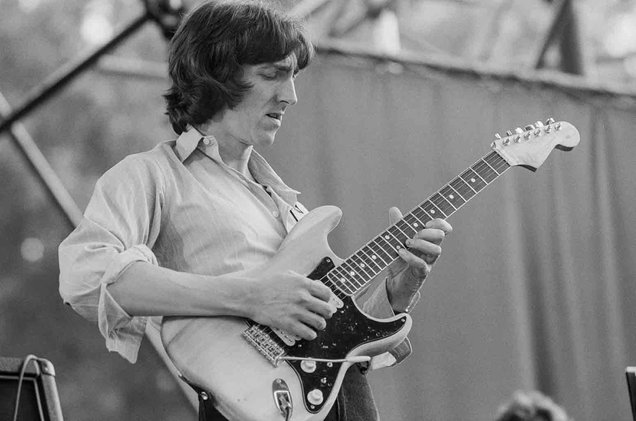The way Allan Holdsworth thought about chords as being groups of (usually 4) notes from a scale blew my mind when I first saw him explain it on his REH instructional DVD. Holdsworth was never interested in the standard diatonic chords which come neatly stacked in thirds. This was a concept that I also found to be very limiting, so his idea of finding a set of notes you liked the sound of and moving up and down the fretboard was a breath of fresh air. Let’s venture into Holdsworth territory…
Most guitarists wouldn’t think to look at scale patterns the entire length of the fretboard to find/learn chords, but this is what Allan did. If you look at the C Major Scale pattern below, you might see some familiar chord shapes in there, but in Allan’s system ANY GROUP OF (USUALLY 4) NOTES can be considered a chord that is diatonic to the C Major Scale.

If you watch Allan comping, you’ll see him pull chords from this and many other scales by selecting groups of notes he likes the sound of; these groups of notes often involve large stretches, string skipping and unusual combinations of intervals, but if you stay within the confines of the scale pattern, they must all ‘work’ because they are still diatonic.
Over to You
Doing this yourself makes for a fantastic exercise in creativity, and will no doubt help you come up with new sounds within the context of a scale you probably already know like the back of your hand.
This first set of chords doesn’t stray too far from the neatly stacked diatonic ones but has a less defined sound.

These chords are the diatonic chords without the 5th, but what’s interesting here is that the fingering is the same for all of them and you avoid the b5 in the Bm7b5 chord, ending up with a more usable Bm7 chord with no 5th.
This next set of chords involves bigger stretches and is more reminiscent of the sets of chords that Holdsworth himself would have used.

These chords provide a great stretching workout for your fretting hand; if you find the stretches too much, start the sequence at the fifth fret (diatonically you’ll be in E), and stop if it hurts.
This concept should give you an insight into how Holdsworth came up with those unusual chord voicings. In this lesson, we’ve barely scratched the surface of the possible chords (groups of notes) that can be derived from the C Major Scale, imagine how far Holdsworth himself took this idea!



